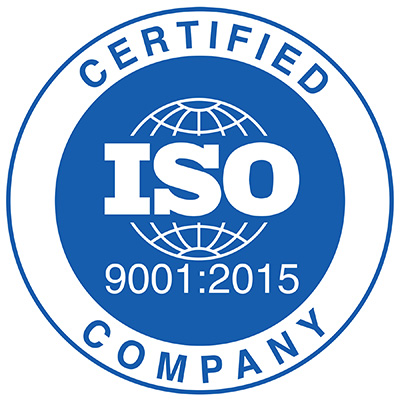FAQs
Home / FAQs
A: For the filters Coligh has stock, they will be processed and finished within 7 days after the receipt of order
A: There is no minimum order quantity required. We would do our utmost to support you and serve with the best suitable product even 1pcs.
A: As optical components are light and small, most of the orders would be delivered with international express company like Fedex, DHL and UPS. If you have own forwarder to deal with it, we would send the parcel to your forwarder’s place.
A: Please share with us your requirement or drawing on filters, lens and prism. For specified drawing, we will evaluate and process strictly according to drawing requirement. If you don’t have specified requirement, talk with us sales and technical engineer to evaluate your demand, we will help you define the solution together.
A: In international trade, as a Chinese optical filter company, we accept payment from wire transfer, Paypal, West Union if necessary
A:For most of the orders, we require payment 100% in advance. For reputable customers who often cooperate, we could offer 30 days and 60 days credit. For new customer cooperate with us, if you require to pay after receipt for the first order in new supplier, it is feasible. Please talk and apply with our sales. We will evaluate comprehensively.
A:Yes,we have precision cutting and grinding machine to process the specific dimensions according to the contract. The size allowance would be +/-0.1mm
A: We need the information below.
Fluorescence filter: Microscope brand, model, filter size, fluorophore applied, mounting change if possible
OEM part: Drawing, or specified information on cut on, cut off, CWLm bandwidth, blocking area, blocking depth, slop control.
Sales and delivery related: Billing address, shipping address, buyer contract.
A: Please contact the sales. Before the production, you could change or cancel the order. Sales would keep you updated on the status on material preparation, production, and ready for delivery.
A: An optical filter is a device that selectively transmits or reflects certain wavelengths or colors of light while blocking or attenuating others. It is designed to modify the spectral content of light, such as to remove unwanted wavelengths, enhance specific colors, or isolate narrow spectral bands.
Optical filters can have different optical properties, such as transmission or reflection spectra, angle of incidence, polarization, and optical density. The choice of filter depends on the specific application, such as color separation, fluorescence imaging, or laser protection, among others.
Optical filters are used in a wide range of industries and applications, such as photography, spectroscopy, medical imaging, astronomy, lighting, display technology, and optical communications, among others. They can be customized to meet specific requirements of the application, such as size, shape, wavelength range, and optical density.
Absorptive filters: These filters absorb specific wavelengths of light and allow others to pass through.
Interference filters: Also known as thin-film filters, these use the interference of light waves to selectively reflect or transmit specific wavelengths.
Bandpass filters: These filters allow a specific range of wavelengths to pass through while blocking others.
Long-pass filters: These filters allow longer wavelengths to pass through while blocking shorter wavelengths.
Short-pass filters: These filters allow shorter wavelengths to pass through while blocking longer wavelengths.
Color filters: These filters allow specific colors of light to pass through while blocking others.
UV and IR filters: These filters block ultraviolet or infrared light, respectively.
Dichroic filters: These filters reflect or transmit specific wavelengths based on the angle of incidence of the light.
Optical filters work by selectively transmitting or reflecting certain wavelengths or colors of light while blocking or attenuating others. This is achieved through various mechanisms, depending on the type of filter.
For example, absorptive filters work by absorbing certain wavelengths of light while transmitting others. The filter material is designed to selectively absorb light at specific wavelengths, based on its composition and structure.
Interference filters work by using thin layers of material to create a constructive or destructive interference pattern, which selectively reflects or transmits certain wavelengths of light. The thickness and refractive index of each layer are carefully controlled to create the desired interference pattern.
The performance of an optical filter is determined by its optical properties, such as transmission or reflection spectra, angle of incidence, polarization, and the type of light source used. The choice of filter depends on the specific application, such as color separation, fluorescence imaging, or laser protection, among others.
When selecting an optical filter, there are several factors that should be considered:
Wavelength range:The wavelength range should be selected based on the specific application or experiment.
Bandwidth: provides better spectral selectivity, but may reduce the amount of light transmitted or reflected.
Transmission or reflection characteristics: The filter should be designed to transmit or reflect light at the desired level.
Polarization: If the light is polarized, the filter should be designed to transmit or reflect light with the desired polarization state.
Angle of incidence: The filter should be designed to work at the angle of incidence required for the application.
Optical density:The optical density determines how much light is transmitted or reflected by the filter.
Environmental factors:Factors such as temperature, humidity, and exposure to chemicals can affect the performance of the filter.
The lifespan of an optical filter can vary depending on several factors such as the type of filter, the quality of materials used, the environmental conditions it is exposed to, and the frequency of use. In general, high-quality optical filters that are properly cared for and used infrequently can last for several years or even decades. However, filters that are exposed to harsh environmental conditions such as high temperatures, humidity, or exposure to chemicals may degrade more quickly. It’s difficult to give a specific lifespan for optical filters since it varies so much depending on the specific circumstances.
- Remove any loose dust or debris from the filter’s surface using a soft brush or a can of compressed air. Be careful not to scratch the surface of the filter.
- Wet a clean, soft microfiber cloth with a small amount of lens cleaning solution. You can purchase a specific solution for cleaning camera lenses and filters, or use a solution made from equal parts of distilled water and isopropyl alcohol.
- Gently wipe the filter’s surface with the dampened cloth, using a circular motion. Avoid applying too much pressure or rubbing too hard.
- If there are stubborn spots or fingerprints, use a lens cleaning pen or a cotton swab lightly dampened with a cleaning solution to target the area.
- Once you have cleaned the filter, use a dry microfiber cloth to gently buff the surface and remove any remaining moisture or smudges.
Note that some filters may have special coatings or delicate surfaces that require specific cleaning methods or solutions. Please consult Coligh’s instructions.
- Please check the correct orientation of the filter. Most filters will have an arrow or some other indication of the correct direction of light transmission.
- Clean the surface of the equipment where the filter will be installed. This will keep the filter from being contaminated.
- Place the filter into the filter holder or mounting ring. Make sure that the filter is centered and secured in place.
- Tighten any screws or clamps that hold the filter in place.
- Perform any necessary alignment or calibration procedures. The filter may need to be aligned with other optical components or calibrated for accurate readings for some equipment.
- Test the equipment with the installed filter to check if it is functioning properly
If you have any doubt about the filters installation, please contact your Coligh’s sales.
We would offer correspondent technical support for :
- Application support ( filter selection, performance analysis, and troubleshooting)
- design support (including selecting the right material, determining the filter specifications, and evaluating the filter’s performance)
- Installation and operation support:
- Repair and maintenance support
Check with our technical support for more information.









